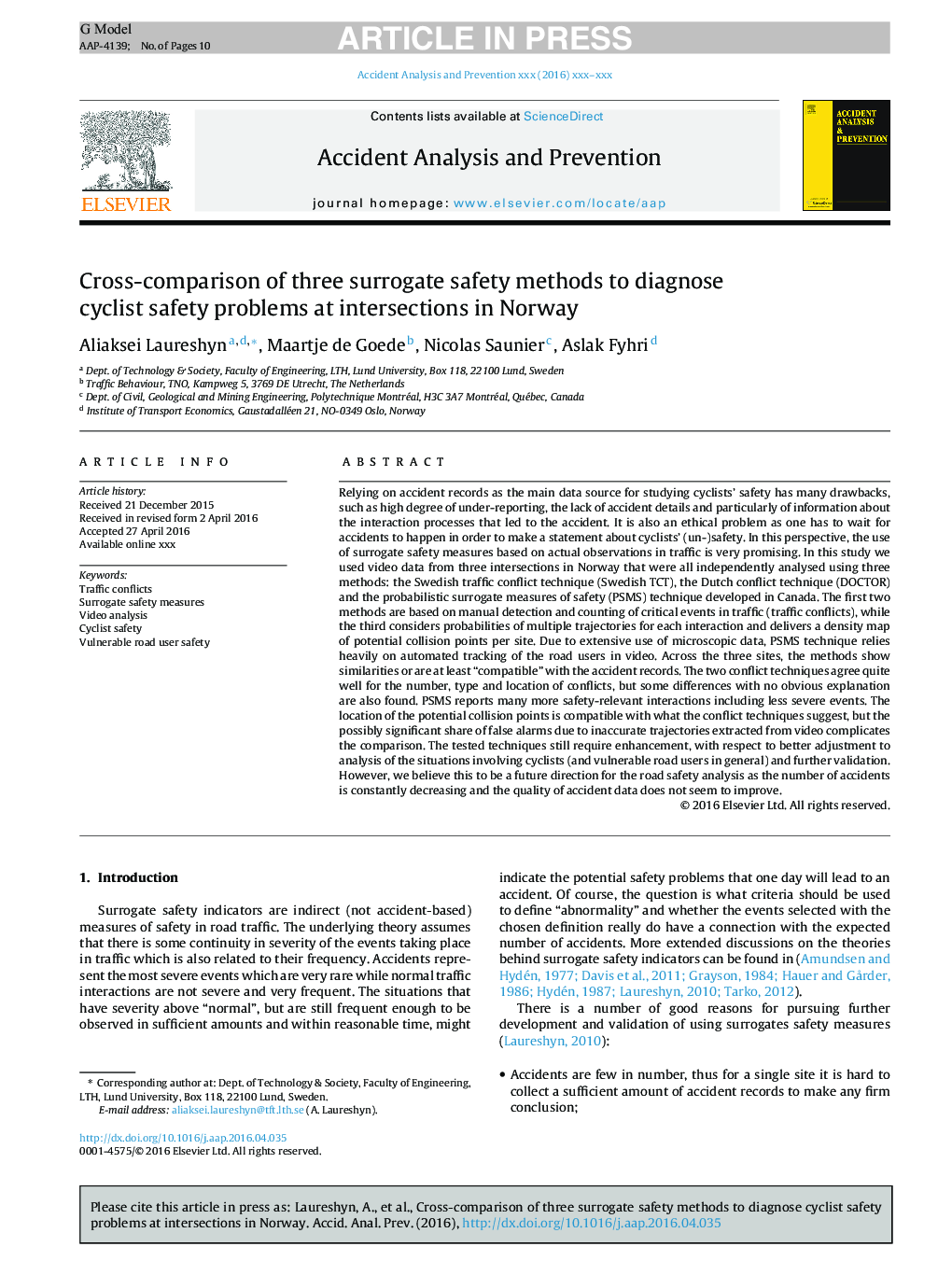| کد مقاله | کد نشریه | سال انتشار | مقاله انگلیسی | نسخه تمام متن |
|---|---|---|---|---|
| 4978567 | 1452894 | 2017 | 10 صفحه PDF | دانلود رایگان |
عنوان انگلیسی مقاله ISI
Cross-comparison of three surrogate safety methods to diagnose cyclist safety problems at intersections in Norway
ترجمه فارسی عنوان
مقایسه مقیاس سه روش ایمنی جایگزین برای تشخیص مشکلات امنیتی دوچرخه سوار در تقاطع ها در نروژ
دانلود مقاله + سفارش ترجمه
دانلود مقاله ISI انگلیسی
رایگان برای ایرانیان
کلمات کلیدی
مناقشات ترافیکی، اقدامات ایمنی جایگزین، تجزیه و تحلیل ویدئو، ایمنی دوچرخهسواری، ایمنی کاربر جاده آسیب پذیر،
موضوعات مرتبط
مهندسی و علوم پایه
مهندسی شیمی
بهداشت و امنیت شیمی
چکیده انگلیسی
Relying on accident records as the main data source for studying cyclists' safety has many drawbacks, such as high degree of under-reporting, the lack of accident details and particularly of information about the interaction processes that led to the accident. It is also an ethical problem as one has to wait for accidents to happen in order to make a statement about cyclists' (un-)safety. In this perspective, the use of surrogate safety measures based on actual observations in traffic is very promising. In this study we used video data from three intersections in Norway that were all independently analysed using three methods: the Swedish traffic conflict technique (Swedish TCT), the Dutch conflict technique (DOCTOR) and the probabilistic surrogate measures of safety (PSMS) technique developed in Canada. The first two methods are based on manual detection and counting of critical events in traffic (traffic conflicts), while the third considers probabilities of multiple trajectories for each interaction and delivers a density map of potential collision points per site. Due to extensive use of microscopic data, PSMS technique relies heavily on automated tracking of the road users in video. Across the three sites, the methods show similarities or are at least “compatible” with the accident records. The two conflict techniques agree quite well for the number, type and location of conflicts, but some differences with no obvious explanation are also found. PSMS reports many more safety-relevant interactions including less severe events. The location of the potential collision points is compatible with what the conflict techniques suggest, but the possibly significant share of false alarms due to inaccurate trajectories extracted from video complicates the comparison. The tested techniques still require enhancement, with respect to better adjustment to analysis of the situations involving cyclists (and vulnerable road users in general) and further validation. However, we believe this to be a future direction for the road safety analysis as the number of accidents is constantly decreasing and the quality of accident data does not seem to improve.
ناشر
Database: Elsevier - ScienceDirect (ساینس دایرکت)
Journal: Accident Analysis & Prevention - Volume 105, August 2017, Pages 11-20
Journal: Accident Analysis & Prevention - Volume 105, August 2017, Pages 11-20
نویسندگان
Aliaksei Laureshyn, Maartje de Goede, Nicolas Saunier, Aslak Fyhri,
